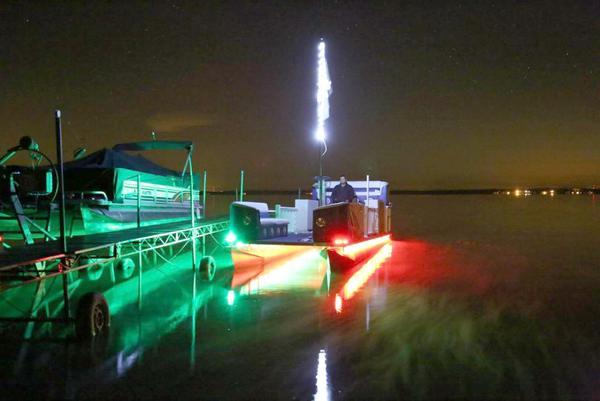- 1. What is the best way to power my LED Lights on my boat?
- 2. What is a DC voltage regulator?
- 3. What kind of weather/water proofing level should I choose for my boat LED’s?
- 4. If I cut and reconnect my strip, how can I keep it weather/water resistant?
- 5. What are the best ways to mount LED’s on my boat?
1. What is the best way to power my LED Lights on my boat?
Best way? Wire your lights directly into your boat's 12V battery and enjoy! With most boats this task is as simple as finding the boat's fuse box or breaker panel. Listen though, a word of caution, you have to, absolutely have to, make sure that the power source is 12V. A fair many boats have regulators built in that will preventthe power from spiking up to 13 or 14 volts, but if your boat doesn't have this safety feature, don't worry, you can protect your LEDs with a DC voltage regulator.
2. What is a DC voltage regulator?
Simply put, a DC voltage regulator makes sure DC power doesn't exceed 12V, I could bore you with the science, but neither of us are here for that. In some large vehicles, boats included, there's a chance that the 12V battery can output more than those 12V, sometimes up to 13, or even 14 volts depending on how charged the battery is or if it's under a lot of strain. So if there's no regulator on your boat, the following effects may become present in your LED lights: Dimming, loss of hearing, fading, light pattern baldness, and even burn outs. If your lights or lights you know have experienced any of these effects, you should have bought a DC voltage regulator.
3. What kind of weather/water proofing level should I choose for my boat LED’s?
Depending on where the lights are located on your boat, this answer could change, but at the very least we suggest weatherproof LED strip lights, which are graded IP65. Now you could also want full on waterproof LED strip lights (IP67) if your lights are anywhere near your boats outer edge, or even on the hull itself. If you want to be safe, IP67's all the way can't hurt as boats are quite commonly associated with and surrounded by water. Let's say you're only looking for cabin lighting though, in that case IP65's will work fine.
4. If I cut and reconnect my strip, how can I keep it weather/water resistant?
Once you've cut and/or reconnected your strips, you can cover any open components with some high-grade silicon sealant. We use the same type of silicon gel to coat our IP65 LED strip lights, so you know it's good! The seal will be strong and water tight if used properly, and if you're using connectors, feel free to coat the connector in the silicon as well (though this seals it tight, it can make the connector tougher to get to if there are any issues.
5. What are the best ways to mount LED’s on my boat?
If you're mounting LED strip lights in the cabin or away from watery areas on your boat, then the adhesive that comes standard on the strips will work fine as long as you make sure you're mounting on a smooth, dry, and clean surface. Looking for something tougher? We offer a super strong foam mounting tape on our website. It's the same tape used on our IP65's! Now for the fully waterproof IP67s, there's no included adhesive as the strip is contained in a waterproof silicon sleeve. Don't worry though! These lights ship with mounting clips that can be screwed in anywhere you need them. Now we don't want you drilling holes in the side of your beautiful boat, so you can use the silicon sealant I mentioned earlier as a mounting option for these strips! And as always, zip-ties are tough to beat if they can be made to work!
---
Thanks for reading this installment of our troubleshooting series, we truly hope it has been helpful. Our customer service staff (customerservice@hitlights.com) is happy to assist you with any of your concerns, questions, and suggestion

